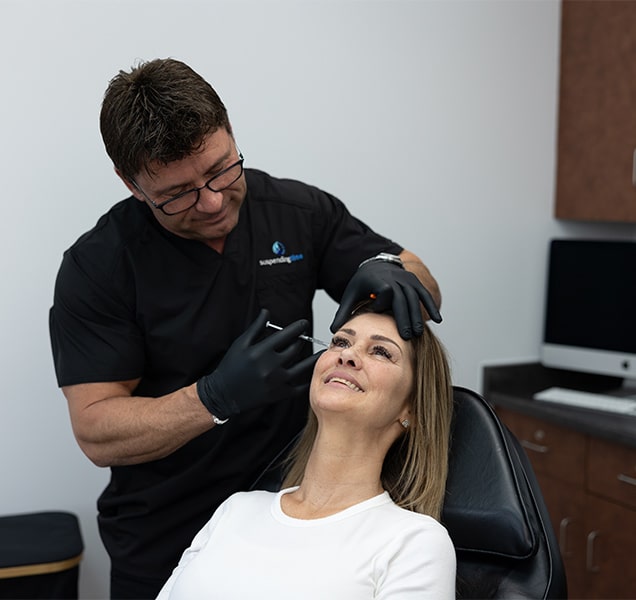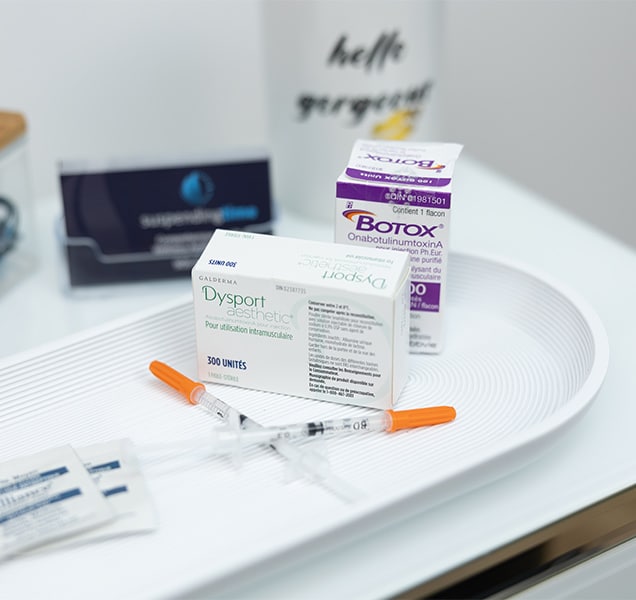Neuromodulators (Botox)
Neuromodulators, such as Botox, Dysport, and Xeomin, are primarily known for their cosmetic application in reducing wrinkles and lines on the face. However, they also have therapeutic uses in treating various health conditions related to muscle spasms, chronic pain, neurological disorders, and other medical issues. Some of the health conditions for which neuromodulators are used include:
- Chronic Migraines: Neuromodulators can be injected into specific head and neck muscles to help prevent migraines in individuals who experience frequent and severe headaches.
- Muscle Spasms: Neuromodulators are effective in reducing muscle spasms and stiffness in conditions like cervical dystonia, blepharospasm, and spasticity related to neurological disorders or injuries.
- Hyperhidrosis: Neuromodulators can be used to treat excessive sweating (hyperhidrosis) by blocking the nerve signals that stimulate sweat production.
- Overactive Bladder: In cases of overactive bladder and urinary incontinence, neuromodulators can be injected into the bladder muscle to help relax the muscle and reduce symptoms.
- Temporomandibular Joint Disorders (TMJ): Neuromodulators may be used to alleviate jaw pain and muscle tension associated with TMJ disorders.
The effectiveness of neuromodulators in treating these health conditions varies, with results typically lasting for several months before requiring additional treatments. It’s essential to consult with a healthcare provider or specialist familiar with neuromodulator therapy to determine the most suitable approach for managing your specific health condition. They can evaluate your symptoms, discuss potential treatment options, and provide personalized care to help you achieve optimal outcomes.

Neuromodulators (Botox) for Health & Wellness Treatments
- Migraines
- Masseter Muscles
- TMJ Syndrome
- Jaw Clenching
- Teeth Grinding
- Neck Spasms, Muscular Stiffness & Pain
- Hyperhidrosis – Excessive Sweating

Follow us on Instagram
@suspendingtime

